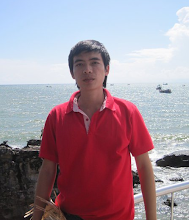
FREQUENTLY ASKED QUESTIONS
1. What is it like to live in VietNam?
It is culturally stimulating and the people are very friendly. Vietnamese people can often go out of their way to help and assist foreigners. It’s still relatively untainted by Western culture though the speed of Vietnam’s progress now affords all the modern conveniences. The pace of the people is usually slow but the traffic is surprisingly hectic. Vietnam is full of spice, yet not too hot. There is curiosity, generosity and a rich cultural and community spirit which is emotionally moving and uplifting. Its charms can entice and enthral. For teachers, it provides an opportunity for a relaxed, relatively untrammelled lifestyle which affords a certain simplicity or even luxury. It can be very sociable, if you want it to be. Some teachers stay in guest houses while others find rental accommodation, either in share situations and/or houses and apartments.
2. What is it like to work at Compass Education
Teachers are placed in local community schools working with other foreign and Vietnamese teachers. This can open up new experiences which can be enriching and fulfilling. A sense of support is given and the teachers are required to be responsible, culturally sensitive and independently motivated to fulfil their services.
3. What do teachers wear to work?
Teachers must wear smart, comfortable attire, ties for the men.
4. How can I get around town and get to school?
There are several means of getting around all of which are easy to come by and cheap. Car and motorbike taxis are readily available or you can rent or buy a motorbike or else go by bus.
5. How much money should I bring with me for the first month?
You will need to pay for initial accommodation which can be in the vicinity of US$250-$600 per month depending on your comforts. The deposit on an apartment is usually a couple of months rent in advance. Furnished and unfurnished or serviced for those wanting more. Laundry services are also available. Food and entertainment could be around US$400 per month depending on your extravagancies.
6. Can I send money home?
It is possible to send money home legally through your bank.
7. Do I need any vaccinations? What if I get sick?
There are no required vaccinations, although Hep A and B are recommended. The vaccinations are available within Vietnam. Malaria is not a significant issue in the larger cities. There are Western clinics with English-speaking doctors. Pharmacies offering recognised Western medicines are also available.
8. For any additional questions please do not hesitate to contact us at information@compass.edu.vn








